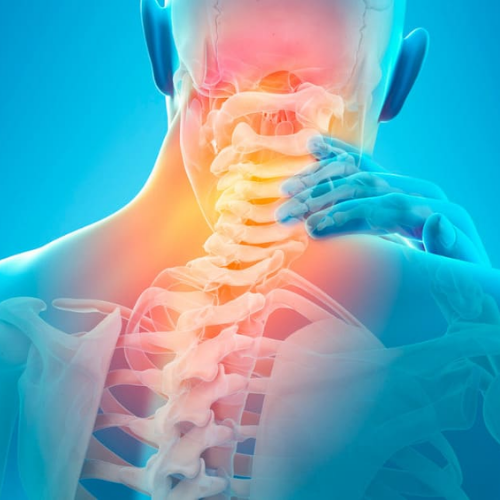Working Time
Book Appointment

Cervical Radiculopathy
Cervical radiculopathy is a condition characterised by neck pain accompanied by pain radiating down the arm, often associated with tingling and numbness. It results from compression or irritation of nerve roots in the cervical spine. Understanding its causes, clinical presentation, and diagnostic methods is crucial for effective management.
Degenerative Cervical Disc Disease
- Ageing-related changes in cervical discs.
- Dehydration, annulus fibrosus tears, and weakened discs.
Traumatic Cervical Disc Migration
- Resulting from accidents, sports injuries, or falls.
- Sudden displacement of cervical discs.
Cervical Foraminal Stenosis
- Narrowing of the bony opening (foramen) where nerve roots exit.
- Osteophytes, bulging discs, or thickened ligaments cause compression.
Diagnosis
- Clinical Examination
- Unilateral pain presentation.
- Sensory and motor examination for localising the lesion level.
- Spurling Test
- Shoulder Abduction Test, Neck Distraction, Elvey's Upper Limb Tension Test.
A thorough history and clinical examination guide the diagnosis. Provocative tests aid in reproducing symptoms for confirmation. Imaging studies like MRI may be used for further evaluation.
Management
In many cases, conservative treatments such as rest, physical therapy, cervical traction, nonsteroidal anti-inflammatory drugs (NSAIDs), and muscle relaxants may be recommended as initial management strategies to alleviate symptoms and improve function.
Cervical Epidural Steroid Injections (ESIs)
During the procedure:
- The patient is positioned on the procedure table, and vital signs may be monitored.
- Fluoroscopy (real-time X-ray) or ultrasound guidance is often used to visualise the cervical spine and guide the placement of the injection needle with precision.
- A local anaesthetic is administered to numb the skin and underlying tissue at the injection site.
- A mixture of corticosteroid medication (such as cortisone) and a local anaesthetic is injected into the epidural space around the affected nerve root to reduce inflammation and alleviate pain.
- The procedure may be repeated over a series of injections spaced several weeks apart for optimal effectiveness, if needed.
Additionally, a comprehensive treatment plan for cervical radiculopathy may also include other interventions such as medication management, physical therapy, and lifestyle modifications to optimise outcomes and improve overall quality of life.



